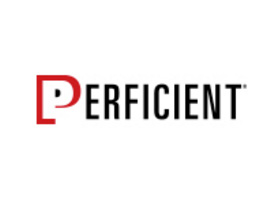The need exists for the ability to read and extract data from BICS, especially when the ETL strategy involves a Staging approach, as written about in Best Practice to ETL with Data Sync (BICS). But Data Sync does not support the direct data read from BICS. The built-in Oracle (BICS) connection in Data Sync only supports a data write to BICS. […]
Posts Tagged ‘ETL’
ODI Best Practices to Achieve Fast-Paced ETL (Part 2) #C17LV
Integrating data from non-Oracle source systems with an Oracle prepackage solution is a common practice that requires source to Target integration. While implementing BI Apps/Oracle EHA (Enterprise Healthcare Analytics) with a new source, I used several best practices, which can be leveraged while integrating a new source in an Oracle Warehouse using ODI. As a […]
Informatica Data Quality – Another Peek!
In my last blog, I presented a brief overview on Informatica Data Quality (IDQ) tools, the significance of Data Profiling and how to use the Analyst tool to profile data. In this second blog, I will introduce a few commonly used Informatica Developer tool Data Transformations. But, Why Data Transformations? Long story short, Data Quality […]
Circulo (Looping) logic in Informatica
Many of us have used the looping logic in programming languages or in others tool that we use. Looping logic is when you process each record continuously until it reaches its maximum limit. So, what’s new in looping logic? Let’s see here. In Informatica, it is quite problematic to loop a single record and there […]
CDC Optimization in Datastage
“Small Change & Big Difference” Today in almost all the sectors, say, Banking, Healthcare, Insurance, Telecom..we handle billions and trillions of data in a batch mode processing. In enterprise data warehouse, capturing the changes in everyday transactions and loading into datawarehouse will be a time-consuming process if the data volume is high. Though ETL tools […]
Web Services Communication Using Informatica
Introduction In today’s fast paced world, Organizations have started using different types of software systems to compete and to be up to the speed of the world. This eventually increases the need for communication between different software systems and the same is growing by leaps and bounds. And with the Current data warehousing and data […]
Configure Data Sync (BICS) to Load Staging Database
In this blog, I will finish the Best Practice to ETL with Data Sync (BICS) post by showing you how to configure the Data Sync to load data in staging database. First, set up a new database connection in Data Sync for SQL Server or Oracle database. For SQL Server > Set Connection Type to MSSQL > Fill in the rest […]
Best Practice to ETL with Data Sync (BICS)
As Oracle BI Cloud Service (BICS) starts to become popular, I am going to write a series blogs about best use of the Data Sync to upload data to BICS schema service. In this post, I am going to share with you a best practice to use Data Sync for ETL. As an ETL tool, Data […]
Traversing Unstructured Data in Datastage
What is Unstructured Data? Unstructured data is an information that does not have a predefined data model or does not fit well into relational tables. It is broadly classified into two types Non-Textual unstructured data is a multimedia data like still images, videos, and MP3 audio files Textual unstructured data are like email messages, instant […]
Hybrid SCD implementation in Informatica
What is Hybrid SCD? Slowly Changing Dimension (SCD) Type 6 is also called as “Hybrid SCD” that combines three fundamental SCD techniques. Type 6 can be used when you want to maintain complete history and would also like to have an easy way to manage current version. The point of “type 6” or “Hybrid” processing […]
Story Points Estimation on a Data Warehouse Project
It has been decades since people started to develop data warehousing (DW) systems. In fact, most of the delivery strategy and approach on DW is to follow the traditional waterfall cycle – discovery, requirement, design, development, test, training, and transition, etc. With this pattern, only the previous step is completed; the team will start on […]
Delving into Web Service through ODI
Today, enterprises are dealing with different data sources and targets, SaS to CRM, Data Warehouse, Social Media, etc.., Integration of data is at the heart of every initiative. Building a Data Warehouse should be initiated from both ETL as well as Data integration perspective. In order to fulfill this requirement, ODI comes into picture. ODI […]




